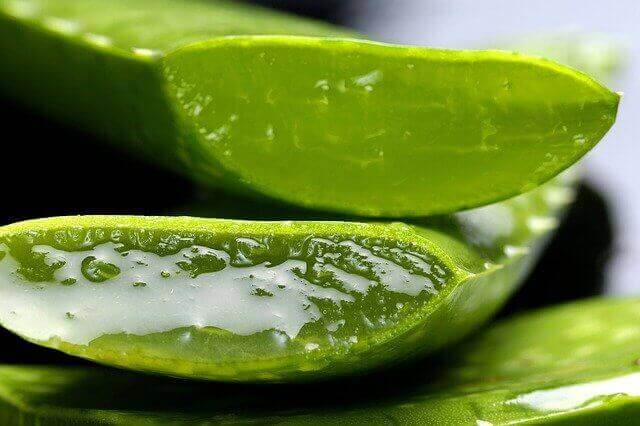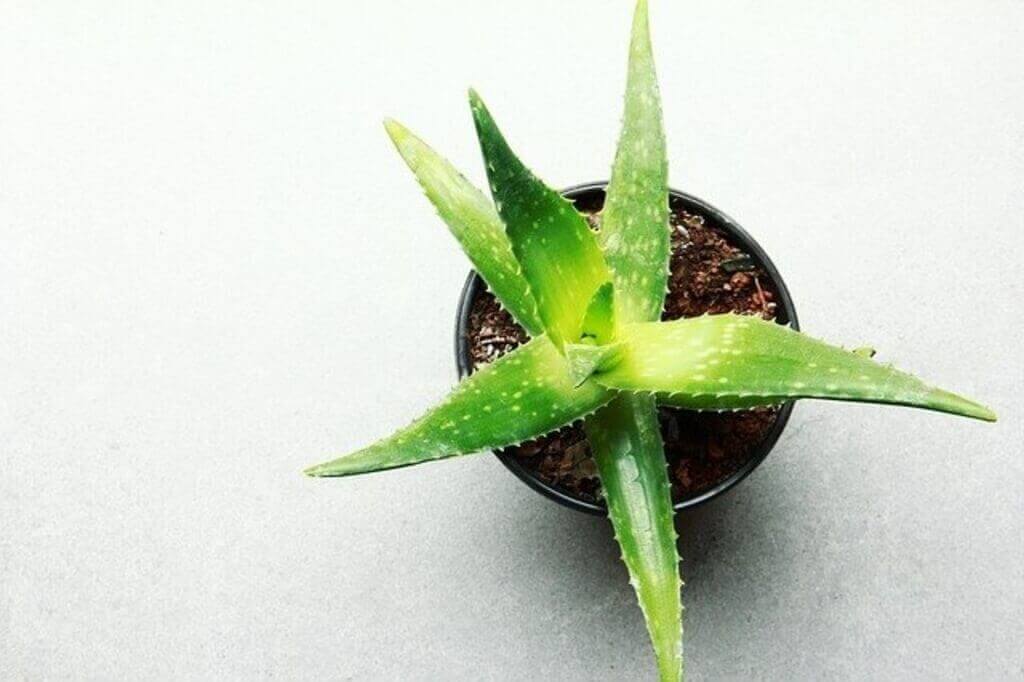How To Grow Aloe Vera From Seed

Growing Aloe Vera at home can be a great way to give yourself more freedom. It is naturally very drought resistant, doesn’t need a lot of water, and is full of nutrients. Also growing it at home means that you don’t have to go out and buy a ton of supplies.
It can grow on its own, without any special needs or upkeep, and that is the best thing about it. Plus it can live in any type of soil, with almost no maintenance at all.
Aloe Vera, also called “Lily of the desert” is so easy to grow, not only is it useful, but also help filter the air around your home.
Table of Contents
The History of Aloe Vera
The history of Aloe Vera goes far back to the ancient Egyptians for a variety of medicinal purposes, ranging from treating wounds and helping with childbirth. The ancient Greeks and Romans also put a great amount of value on Aloe Vera for these same reasons.
In fact, it is said that Cleopatra, the queen of the Nile sought out this plant and was so impressed with its healing abilities that she constantly carried several sprigs around with her everywhere she went. Its restorative properties were known to the Chinese, and its use for the common cold was also widely known in Europe and Asia.
Medicinal Uses of Aloe Vera
The Medicinal Uses of Aloe Vera is one of many possible uses of this sun-kissed succulent from the flora of the American continents. Known more for its ability to ease pain, this plant is used in hundreds of different ways by people all over the world.
This is because it is such a diverse plant that can do so much for the human body, no matter what ailment it may be combating. In fact, Aloe Vera is so versatile that it can be used to treat a whole range of conditions, including: sunburn, arthritis, digestion issues, ulcers, skin problems, wounds, cuts, and several other illnesses.
It’s also worth noting that the Aloe Vera plant has been shown to help with the reduction of cholesterol and sugar levels in the blood, which can have a positive impact on the heart.

Germinating Aloe Vera Seeds
Just place a few Aloe Vera seeds in each spot about 1″ deep. Seeds should be planted about 1″ inch apart. The soil needs to be at a fairly warm temperature of 75 degrees F, in order for them to germinate. Aloe Vera requires sunlight and heat to germinate.
If you would like to start them indoors, then the best way to germinate your seeds, is by using a seed starter tray, and I like to combine this with a high quality seedling mix. All these products are available on Amazon.
Aloe Vera seeds will germinate in approximately 14 to 30 days. Seedlings will harden off and will be ready to plant after 4 weeks, and it can be planted outdoors, or in pots or planters.
You will want to keep the seedlings moist by misting them with water in a spray bottle daily.
Selecting a Pot or Planter
If you are growing your Aloe Vera in a pot or planter, it is best to use something that has drainage holes or a planter. This allows your plant to get the moisture it needs while also preventing it from standing directly on the water. You can also add some gravel to the bottom of your containers to help keep the roots from sticking to the sides of the container.
Growing Aloe Vera plants need a good quality pot. You can either purchase or make a quality pot from ceramic, clay or terracotta. The best part about using pots is that it allows you to move your plant from one location to another, while allowing its roots to get sufficient nutrients.
When selecting the size of your pot, I would recommend using a pot that is a minimum of 8″ – 12″ inches in diameter. This will give your plant more than enough room, so that the roots can fully expand.
Whenever I grow this herb, I like to use the Stoneware Planter Pot with Drainage Hole and Saucer combined with a good-quality, well-draining soil from FoxFarm. You can purchase both of these products on Amazon.
Soil Needed
Recommended soil for growing Aloe Vera is a combination of organic matter, and compost. Aloe Vera, as a plant, needs both nutrients, such as vitamins A, C, E, and K, and the correct pH level of 4.5 – 5.5, as well as trace minerals such as copper, molybdenum, and titanium.
It grows best in soil that has a high percentage of organic matter and a low percentage of clay, or any other porous substance. Clay soils tend to hold too much water, which can cause the roots to become more susceptible to rotting and to break down prematurely.
Porous soils also encourage the growth of mold, which can cause damage to the tender roots and eventually to the entire plant. The ideal mix of clay and peat based soil will balance the amount of nutrients available to the plant, while maintaining a proper moisture level so that the plant remains healthy and will continue to grow successfully.
There are several growing tips that can help you achieve the best results. First, keep the soil moist, but not wet. Most people believe that damp soil is the perfect growing medium for this succulent, but the truth is that it can become toxic to the plants when it becomes too saturated. Also, be sure to mulch your plants, which will help preserve and protect them from extreme temperatures, wind, and harsh elements.
Proper Watering
When you are growing it in the garden it is important that the soil is watered on a regular basis. You can add a slow releasing fertilizer to the soil as this will ensure that it remains in a healthy condition.
Do not over water the plants however, as the roots will need to have room to grow. Overwatering will encourage root rot and root fungus which will inhibit the continued growth of the plant.
Sunlight Requirements
In the process of growing, you need to be aware of the sunlight requirements for this particular plant. Sunlight is very important for your plants because it makes them grow healthy and strong. When it comes to sunlight, it is important for plants to receive adequate amounts of light in order for them to grow.
Plants need approximately six hours of sunlight each day. You should place them in areas with a higher percentage of sunlight and try to place them at least five feet away from the walls of your house, or wherever you want them to grow.

Pruning
A common mistake among amateur gardeners is that they prune their plants too early. They believe that by removing old growth, they will be reducing the amount of water the plant needs. In fact, however, the young growth is actually more useful to the plant than is old growth, and it will make it easier for the plant to absorb water. In addition, removing too much growth at one time causes the plant to become stressed, which in turn may lead to disease. The best time for you to prune your Aloe plant is in the late winter or early spring, before new growth has fully developed.
The reason to prune it, is to remove any dead branches or twigs that may be on your plant. You should also check for damaged or dead leaves. Dead or damaged leaves or branches to prevent the rest of your plant from absorbing as much water as it needs. It is also a good idea to check to see if your plant’s root system is damaged too.
The trick is to trim off any leaves, or leaf tips that have changed to a pinkish-brown color. These leaves are dying, and it is best to remove them in order for your aloe to stay healthy. I like to use either scissors or shears to remove them. These parts are dying, so removing them helps the aloe plant stay healthy and green. Use a knife for small and medium-sized plants, or sheers for large, thick leaves.
Harvesting
Harvesting Aloe Vera is easy. You simply need to know how to prepare the plant’s gel, and then you can use it to heal whatever ails you! It is even better if harvesting Aloe Vera is part of your daily routine – for example if you’re a runner, then make sure you gather some before each big race. The amazing thing about Aloe Vera is that this super-food can help with a huge number of things from sore muscles to damaged joints. Here are just five ways harvesting can help you.
Use it to relieve pain – If you’ve ever felt aches or pains in your body, chances are you could have taken some leaves, and squeezed them for relief. This is because Aloe Vera has natural anti-inflammatory properties which can reduce swelling and so help you with your discomfort. You can also store the extract in the fridge to keep it fresh, and ready to relieve any unfortunate accidents.
Use it as a natural painkiller – When you harvest aloe leaves, you should strain the leaves until you get the gel, as it will be more effective this way. However, the most important thing to remember is to squeeze the leaves slowly and only with the stems to maximize the amount of gel you get out of the plant.
Companion Plants
- Borage
- Chives
- Garlic
- Shallots
- Scallion
- Leeks








